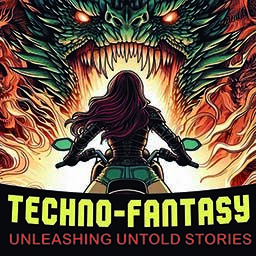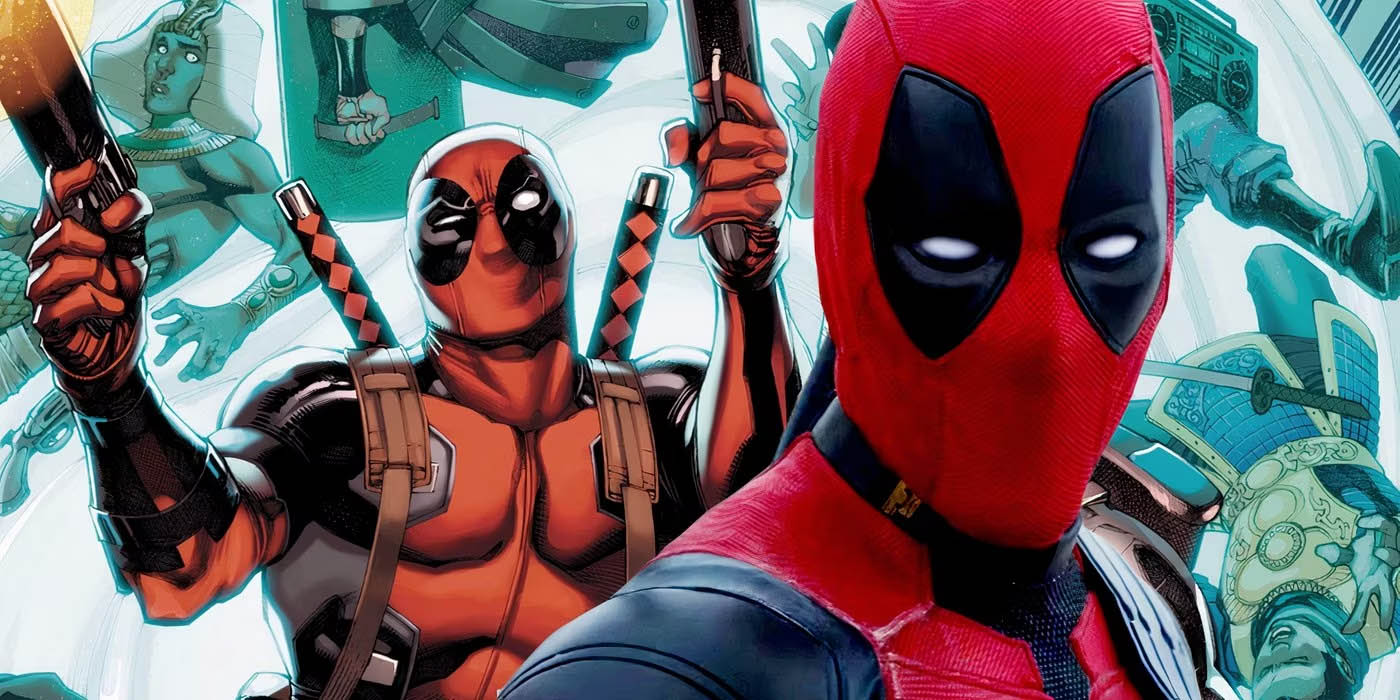Deadpool, the “Merc with a Mouth,” has left an indelible mark on pop culture, revolutionizing the superhero genre with his irreverent humor, metatextual narrative style, and disregard for traditional conventions. Though initially introduced by Marvel as a secondary character, he quickly stood out for his unique ability to break the fourth wall and interact directly with the audience, something rarely seen in comics. Long before his cinematic success, Deadpool had already garnered a loyal fanbase, thanks to his subversive personality that set him apart from conventional heroes.
With the films starring Ryan Reynolds, which perfectly captured the character’s blend of comedy and violence, his popularity soared even further. Deadpool revitalized the superhero subgenre in cinema and expanded the appeal of comic book adaptations to a broader audience, bringing a cynical and irreverent approach to the screen.
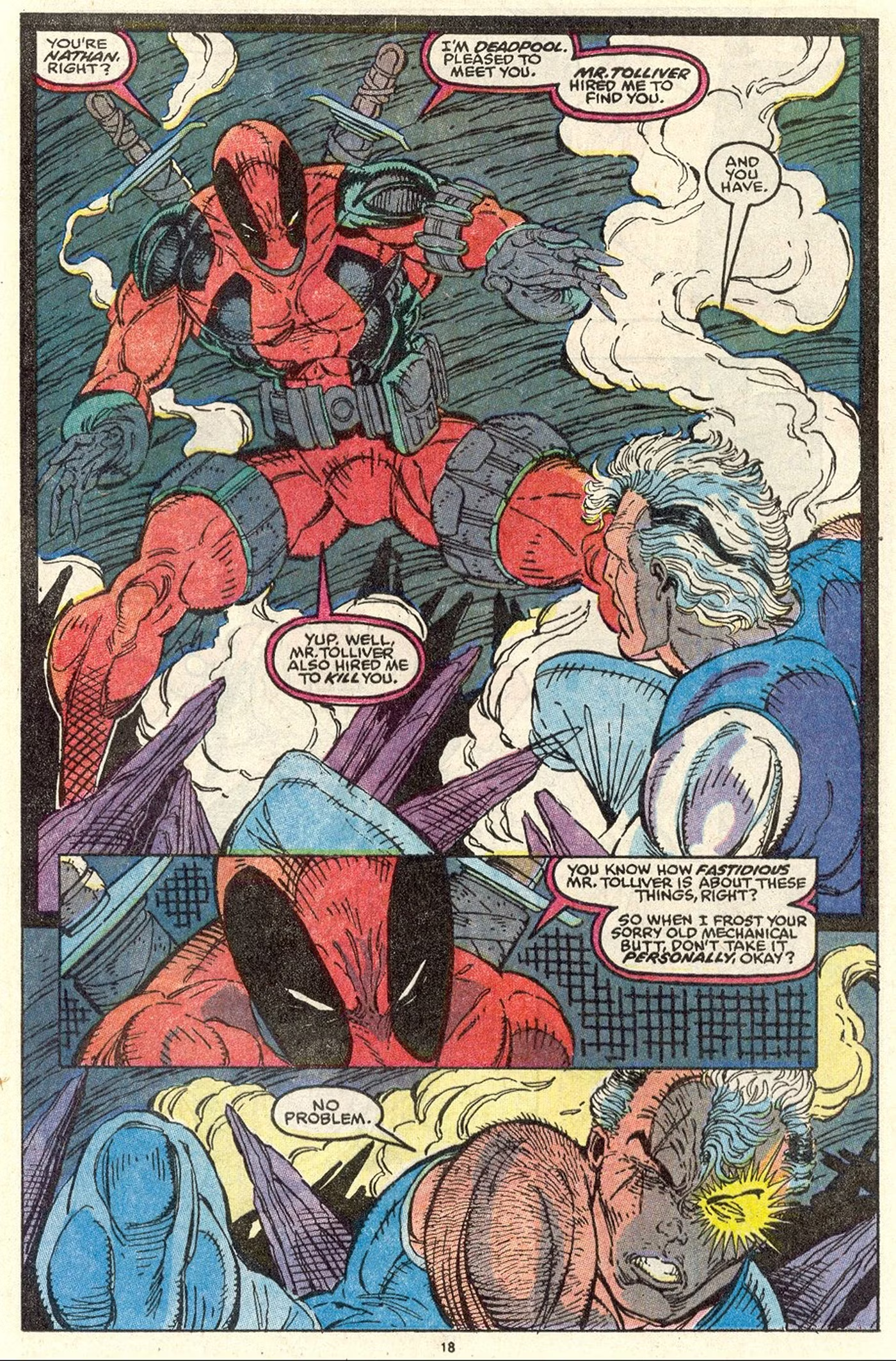
Deadpool is a product of the dark and violent comics of the 1990s, an era characterized by characters with exaggerated muscles and oversized weapons. Created in 1991 by Rob Liefeld and Fabian Nicieza in New Mutants #98, initially as a villain, Deadpool was hired to kill Cable, then the leader of the New Mutants.
Liefeld, who had already created several iconic characters for Marvel such as Cable, Domino, Conflict, and Shatterstar, recalled that as a child, he aspired to become a comic book artist and carried a notebook in which he jotted down all the ideas that came to his mind for character creation. When he began working in the comic book industry, he would consult this notebook for inspiration whenever he needed to create a new character.
The name “Deadpool” was based on a superstition held by his parents, involving bets on the sequence of famous people’s deaths. According to this superstition, whenever a famous person died, two others would follow, and informal bets were made on who these individuals would be. The list where names were recorded was called the “Dead Pool.” The young Liefeld liked how the name sounded and noted it in his notebook.

At the time of his creation for Marvel, Liefeld reasoned that since the character had “dead” in his name, his costume should be red. He sketched a red-and-black jumpsuit filled with pockets to store ammunition, and then a mask that covered the entire head with two large black eyes, very similar to Spider-Man’s costume. This similarity was not accidental. Liefeld explained that his friends Erik Larsen and Todd McFarlane, both artists for Spider-Man titles, joked that it was much easier to draw Spider-Man than the New Mutants characters he was working with. Spider-Man was not just an inspiration for Deadpool’s mask but also the artist’s favorite hero, and Liefeld said in interviews that he wanted to revive the playful, light-hearted tone of Spider-Man from earlier decades, where he would fight villains while cracking jokes and teasing his opponents. By the 1990s, in his view, Spider-Man was no longer the same character he had loved, as Peter Parker was now married and depressed, losing the lightness and comedy of his stories.
When presenting the character to Marvel, Liefeld explicitly stated that Deadpool was Spider-Man with guns and swords and that the main idea was for him to be annoying on purpose. After the character was approved, Liefeld brought the drawings and story to Fabian Nicieza, with whom he worked on New Mutants. Upon seeing Deadpool, Nicieza remarked that Liefeld had drawn DC’s Deathstroke (Slade Wilson) and named the character Wade Winston Wilson for two reasons: first, because Deathstroke’s real name was Slade Wilson, and second, because Stan Lee had a habit of giving his characters alliterative names for easy recall (Bruce Banner, Peter Parker, Sue Storm, Reed Richards, and so on). Another contribution by Nicieza was to link Deadpool’s origin to the Weapon X program, responsible for grafting adamantium onto Wolverine. In the initial concept, Deadpool was intended to be Weapon IX, a failed supersoldier project, since, according to Nicieza, success often requires many failures, and Deadpool was one of them. “Before making an omelet, you have to break a few eggs, and Deadpool was one of those broken eggs.” Later, the character was indeed tied to the Weapon X program but was created after Wolverine, even utilizing Wolverine’s healing factor as a foundation for Deadpool’s own.
Deadpool also needed a distinct voice, and it was decided that his speech bubbles would look different, symbolizing that he could say whatever he wanted, to whomever he wanted, however he wanted. While other superheroes used a font called “Crazy Comics,” Deadpool’s speech was written in “Spooky Tooth,” with his speech bubbles outlined differently.
Once Deadpool appeared in New Mutants, Marvel’s correspondence increased by 500%, a testament to the character’s immediate success. Fans flooded Marvel with letters requesting more appearances of Deadpool in the series or asking for his own solo stories. Soon, the New Mutants magazine gave way to the launch of X-Force, since the characters in it were no longer a group of teenagers learning to deal with their powers, but rather a very efficient action team. This title sold more than five million copies and is among the best-selling of all time to this day. In 1993, Deadpool had his first miniseries published, where he began to make references to pop culture in general, saying, for example, to the villains he faced that they were weaker than Barbie’s Ken, among other things. This miniseries introduced the character’s cancer, his connection to the Weapon X program, and parts of his backstory.

Nicieza wanted to create another Deadpool miniseries, but Marvel found the plot too depressing, as the cancer would return and Deadpool would be on the brink of death again. Dissatisfied with the publisher for other reasons as well, Nicieza eventually left Marvel, and Mark Waid took over the character. Waid’s vision was clear: for him, Deadpool was Bugs Bunny, and he would write him accordingly—violent and humorous. However, the second miniseries was not very successful, and Deadpool began making sporadic appearances in other Marvel titles.
At this time, the comic book industry was experiencing a crisis, which nearly led Marvel to bankruptcy. Deadpool was not the only title suffering; sales across the board were plummeting. Amid this turmoil, Marvel cycled through several editors in an effort to find a solution, one of whom was Matt Idelson, a Deadpool fan. Idelson wanted to revive the character and recruited Joe Kelly to write an ongoing series, giving Kelly near-complete creative freedom, though warning him that the series’ longevity was uncertain. Kelly, who would later become one of the founders of Man of Action, creators of numerous famous intellectual properties like Ben 10, approached Deadpool’s stories with a focus on comedy rather than action. According to Kelly, Deadpool wanted to do the right thing, but he was constitutionally incapable of it. And when he finally succeeded, the universe would trip him up. Illustrated by Ed McGuinness, the series became a success. Kelly penned one of Deadpool’s finest stories, in which the wisecracking mercenary travels back in time and embarks on an adventure in a 1967 issue of The Amazing Spider-Man.
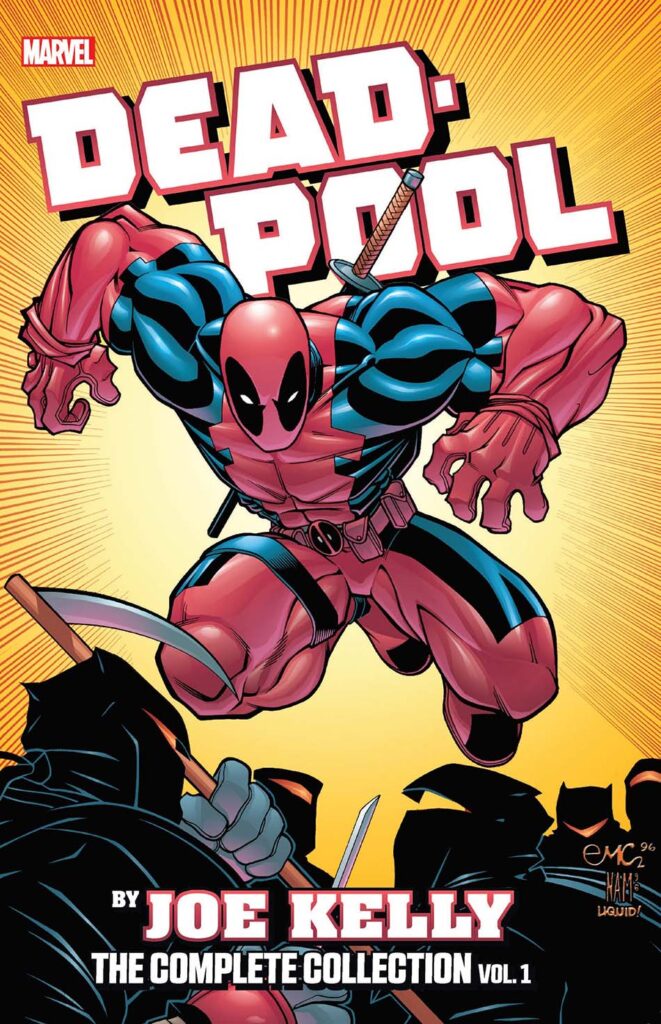
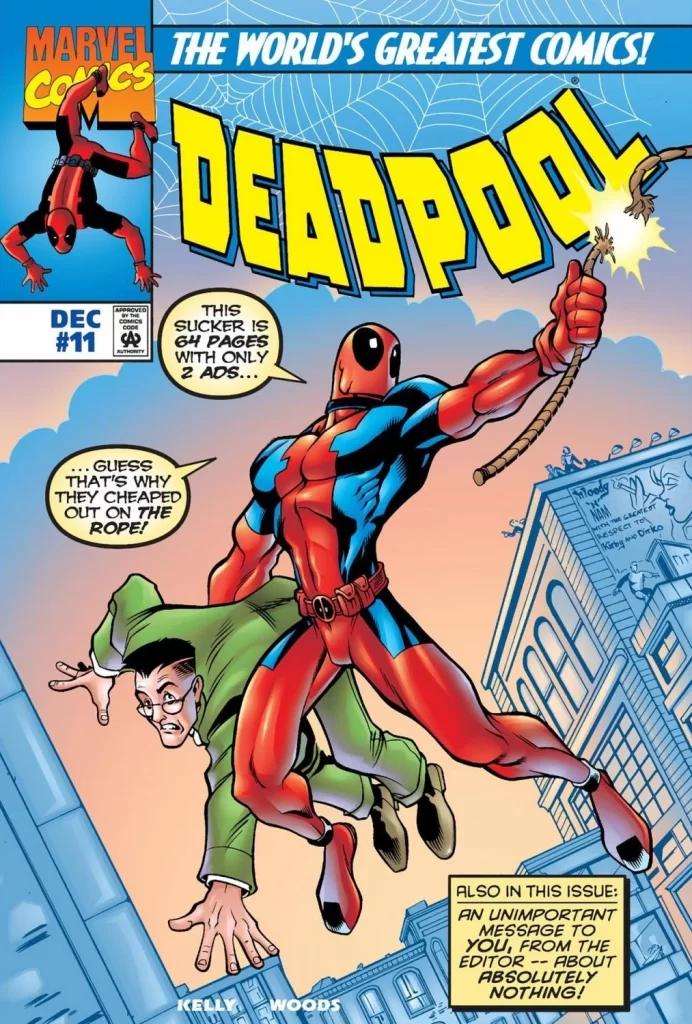
In this series, Deadpool’s breaking of the fourth wall also became a constant, with the character interacting with the reader and fully aware that he was a comic book character. This trait was further developed after Kelly’s departure by another significant writer for the character, Christopher Priest.
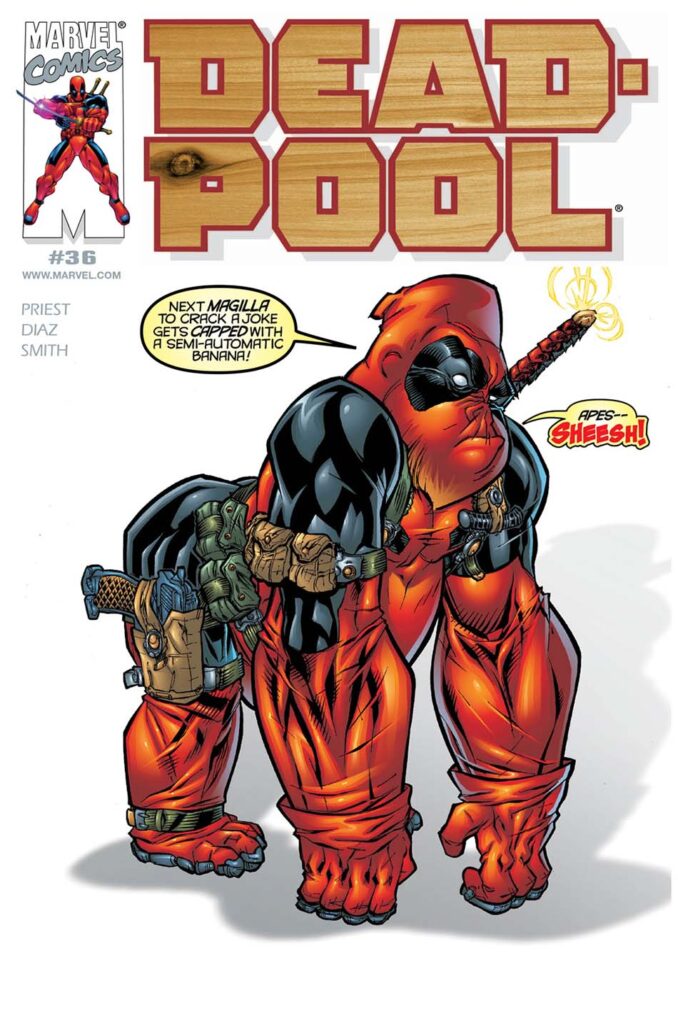
In 2000, Gail Simone took over the character, but despite strong sales and favorable reception, the series was canceled after only a few issues. She was asked to create a new character called Agent X, who was remarkably similar to Deadpool but did not wear the same costume. At the time, there were rumors that this was due to a legal dispute between Marvel and one of the character’s creators over usage rights. When asked about the matter, Fabian Nicieza claimed ignorance, while both Marvel and Rob Liefeld declined to comment, suggesting that the issue lay between them. Gail Simone was eventually removed from the title due to creative differences with new Marvel editors, and subsequent writers failed to replicate her success. Fabian Nicieza was eventually brought back, leading to the creation of Cable & Deadpool, a series that ran for four years before being canceled.
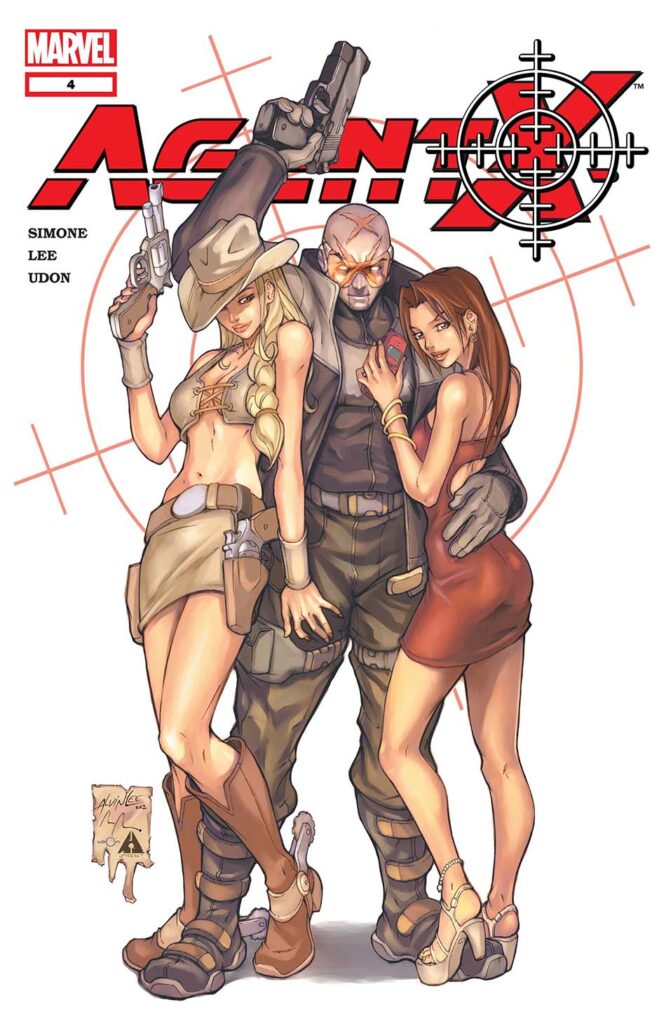
At this point, Daniel Way stepped in as Deadpool’s writer at the invitation of editor Axel Alonso. Alonso granted him complete creative freedom, and in 2008, Way’s tenure on Deadpool began, immediately garnering both critical and popular acclaim. The series maintained an average circulation of 55,000 copies per issue and consistently ranked among the top 20 best-selling comics. During this era, Deadpool was portrayed as having two voices in his head, akin to the angel and devil on one’s shoulders, though in Deadpool’s case, he had two devils. When asked about the character’s success, Way remarked that the key was Deadpool’s uniqueness. One of his editors noted that the secret to a good story was its irreplaceability—if you could swap out the main character and the story still worked, it wasn’t a good story. Replacing Wade Wilson with any other Marvel character in these narratives made no sense whatsoever.
The character’s success at this time was also attributed to the rise of the internet and Deadpool’s connection to fandoms and digital culture. At one point, Deadpool had 11 titles being published simultaneously—more than Spider-Man and the X-Men—a record for simultaneous comic book titles for a single character.
In 2013, one of his titles, Deadpool: Merc With a Mouth, was both a commercial and critical success. The series featured covers that referenced pop culture, replicating iconic comic book covers like Lone Wolf and Cub, album covers like Nirvana’s, and movie posters from Jaws to James Bond. Deadpool had become an absolute phenomenon, prompting Marvel to enlist two famous comedians, Brian Posehn and Gerry Duggan, to write his comics. During this period, Deadpool became Marvel’s most lucrative intellectual property, generating revenue from comics, video games, T-shirts, caps, and various merchandise. Interviews with comic shop owners and event organizers revealed that Deadpool had the highest number of cosplays at events and was the best-selling T-shirt character in their stores. His audience was no longer limited to comic book readers; Deadpool also became a progressive icon due to hints that he might be bisexual, as he displayed attraction to male characters like Cable and Thor. While the writers never explicitly confirmed his bisexuality, the comics strongly suggested it. Additionally, Deadpool’s backstory was explored to reveal that he was a victim of childhood sexual abuse, suffered from depression, and dealt with self-loathing—heavy themes that humanized him and further endeared him to readers.
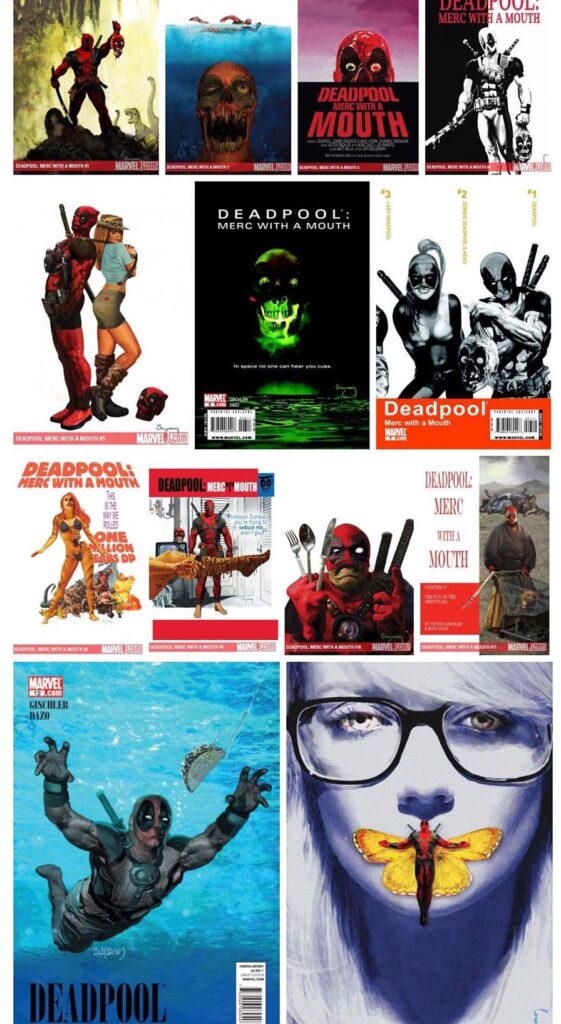
The actor who would eventually embody Deadpool on screen, Ryan Reynolds, first entered the Marvel universe playing Hannibal King, a vampire hunter and investigator in Blade: Trinity, the weakest film in the Blade franchise. Nonetheless, during filming, Reynolds met a writer who introduced him to Deadpool, suggesting that his comedic style and acting would be a perfect match for the character. Intrigued, Reynolds picked up a Deadpool comic, where, coincidentally, a secondary character remarked that Deadpool, without his mask, looked like a cross between a Shar-Pei and Ryan Reynolds. According to the actor, it felt like destiny calling, telling him that he had to bring the character to the big screen.
After the failure of Deadpool in X-Men Origins: Wolverine, a film that almost entirely misrepresented the character, Fox hired the screenwriters of Zombieland to craft a script for a Deadpool movie, and Tim Miller to direct a test action scene that would serve as a pitch for the film. However, with the studio resetting the X-Men franchise through X-Men: First Class, the project was shelved. Yet, a few years later, the short clip leaked online, sparking a massive public outcry for the film to be made. The rest, as they say, is history, with Deadpool, Deadpool 2, and Deadpool & Wolverine.
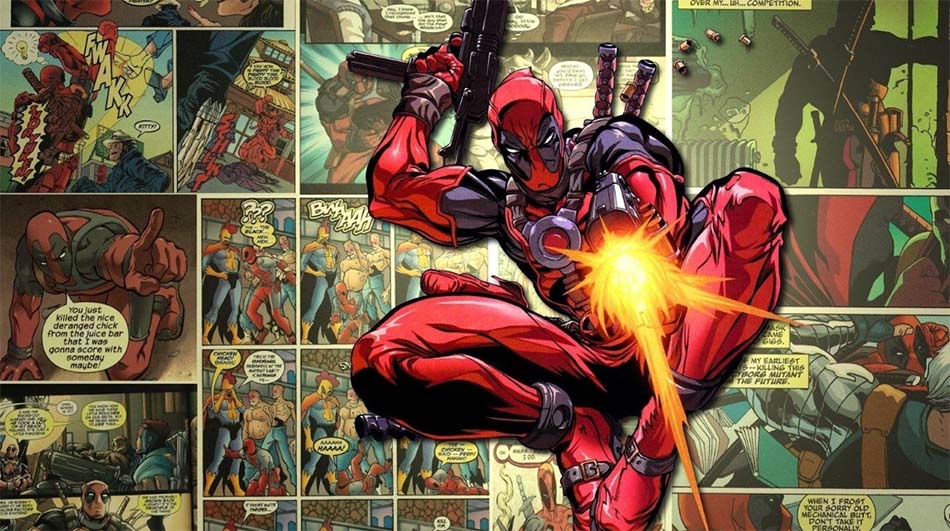
Bibliography:
- https://www.vulture.com/2018/05/deadpool-secret-history.html
- https://www.marvel.com/comics/characters/1009268/deadpool
- https://en.wikipedia.org/wiki/Deadpool
Links to purchase some of the comics mentioned in the text and other good Deadpool stories.
- Deadpool Classic, Vol. 1
- Deadpool, Vol. 1: Dead Presidents
- DEADPOOL EPIC COLLECTION: THE CIRCLE CHASE
- Deadpool Kills the Marvel Universe #2 ” What If He Decided to Kill Everyone and Everything That Makes up the Marvel Universe?
- Deadpool 1
- Deadpool (Volume 1)
- Deadpool by Daniel Way: The Complete Collection Vol. 1 (Deadpool (2008-2012))
- Deadpool Classic Volume 3 TPB (Graphic Novel Pb) by Kelly, Joe, Milgrom, Al, Sinnott, Joe, Lee, Stan (2009) Paperback
- Deadpool Classic Vol. 21: DvX
- Deadpool: Dead Head Redemption (Deadpool Team-Up)
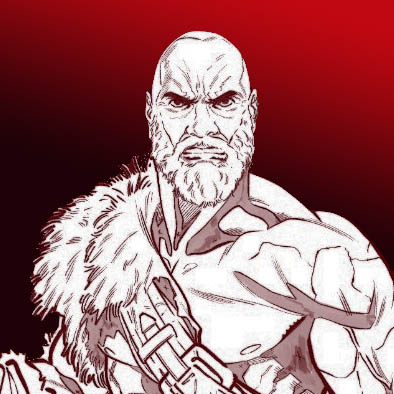
Article by Victor X
Victor Schmidt’s lifelong passions for literature and sports led him to discover his true love in superhero comics. Driven by an unyielding pursuit of the perfect story, Victor channels his energy into delivering insightful and valuable content to the comic book community while continuously refining his craft as a writer. In addition to his writing, he serves as an editor and creative reviewer, ensuring that every piece he touches is polished, impactful, and resonates with readers.
